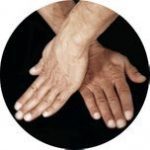Wat is Shiatsu?
 Originally, Shiatsu is a form of Oriental folk medicine, based on the assumption that disturbances in muscles, nerves and organs manifest in the network of energetic channels, called meridians. The energy that flows through these meridians is called Ki, or life energy.
Originally, Shiatsu is a form of Oriental folk medicine, based on the assumption that disturbances in muscles, nerves and organs manifest in the network of energetic channels, called meridians. The energy that flows through these meridians is called Ki, or life energy.
The earliest mentioning of Shiatsu is in the Nei Ching - The Yellow Emperor's Classic of Internal Medicine - written in China 2700 jaar BC. Buddhist monks brought Chinese medicine to Japan in the sixth cenury A.D.. For centuries, Shiatsu has been a traditional system of treatment, passed on for generations. Shiatsu has become recognized as a medical treatment method from the fifties of the last century onward.
In 1964 the Japanese Ministeries of Health and Education officially recognized Shiatsu as a unique and distinct form of therapy using the following definition:
“Therapy, which applies pressure with thumbs and handpalms on certain points of the body, corrects irregularities, maintains and improves health, contributes to alleviating several diseases (several forms of pain, stress, irregularities in the nerve system, etc.) and activates the self-healing capacity of the organism. Has no side effects.”
Classical Shiatsu
Classical Shiatsu differs from the traditional Chinese method. The difference between these two is described as follows by Alan Nash, in an article published in the Dutch journal Bres:
“....In western books on acupuncture, overviews are given of which points need to be pressed in order to alleviate symptoms. In classical Shiatsu, the Oriental (Japanese) approach is used, which is based on the Chinese method of diagnosis. This means that four separate methods of arriving at a diagnosis are combined: bo-shin: observation, bun-shin: listening, mon-shin interviewing and setsu-shin: touch.
In setsu-shin, the traditional Chinese acupuncturist relies most heavily on pulse diagnosis in order to track down the Yin/Yang-balance in the organs and meridians. The classical Japanese Shiatsu therapist on the other hand, will use setsu-shin on the Hara to track down the Yin/Yang balance. Hara is to Japanese, what personality, character, nature of someone is to Westerners. The position of the hara is not found in the heart, head or pulse, but in the area between the bottom of the rib cage and the pelvic bones...”
(Source: Bres, August/September 1987, nr. 137)
How Shiatsu works
Shiatsu is an art of healing, which is based on a holistic view, the hallmark of traditional Oriental views. The next section is easier to understand when the body is considered a totality of a number of systems which are mutually dependent and influencing each other.
Every system in the body has developed a certain way to flow and communicate. Slight variations in patterns of flow and communication make individuals unique. However, the rules that determine the mechanisms are the same for everyone. We can influence one another with our words, touch and attitudes. Following a diagnosis, the system of an individual can be changed in such a way that the overall functioning benefits.
The mystery behind this is the deep and nonverbal level at which this takes place. The individual will recognize this, and pain or harmful ways can leave the body. The key to this system is the understanding of meridians and the energy flow through them.

